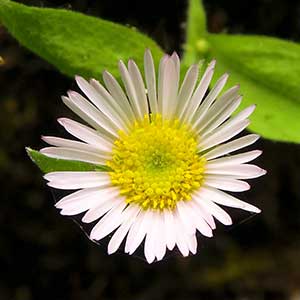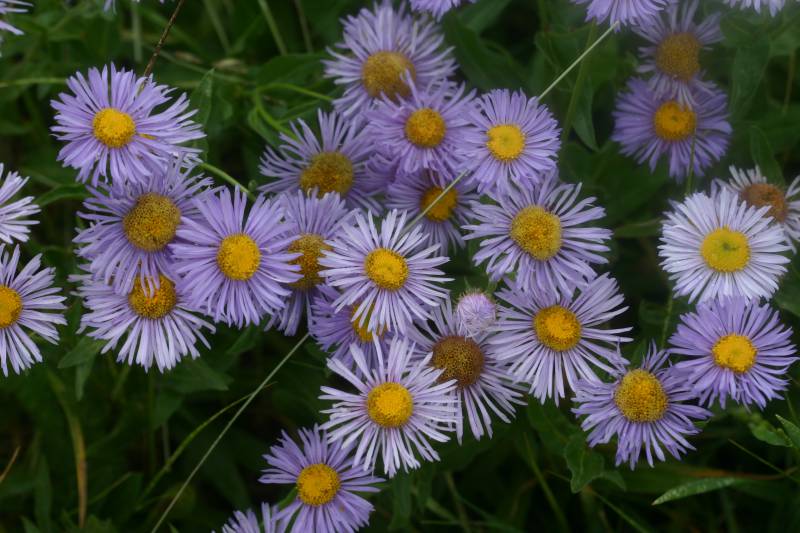|
Gorge fleabane, Oregon fleabane
|
three-veined fleabane
|
| Perennial from a stout, woody base and root, the lax stem 5-15 cm. long, covered with glands and loose, sticky hairs. |
Perennial from a short, woody base, 1.5-8 dm. tall, the stems clustered, amply leafy, spreading-hairy throughout. |
Basal leaves tufted, spatulate to obovate, coarsely toothed or incised, up to 9 cm. long and 2.5 cm. wide; cauline leaves well developed, broadly lanceolate to ovate or elliptic, up to 4 cm. long and 1 cm. wide. |
Leaves triple-nerved, entire, the lower oblanceolate or spatulate, petiolate, mostly deciduous, the other becoming sessile but ample. |
Heads 1-several in a leafy inflorescence, the disk 9-13 mm. wide; involucre 5-7 mm. high, the bracts loose, equal, thin and green; rays 30-60, pink or white to bluish; disk corollas 3.4-4.7 mm. long, yellow; pappus simple, of 15-20 bristles that are curled and twisted above. |
Heads 1-13 in a open inflorescence; involucre 6-9 mm. high; rays 65-150, blue or rarely white or pink, 9-18 mm. long and 1 mm. wide; pappus 20-30 bristles, a few of the outer ones shorter. |
|
|
|
|
| May-September |
July-September |
| Moist shady cliffs and ledges. |
Moderately dry, open places at low to middle elevations. |
Occurring in the Columbia River Gorge in Washington; Columbia River Gorge in Washington to adjacent Gorge area in Oregon.
|
Occurring on both sides of the Cascades crest in Washington; British Columbia to Washington, east to the Rocky Mountains.
|
| Native |
Native |
| Threatened in Washington (WANHP) |
Not of concern |
E. acris, E. aliceae, E. annuus, E. aureus, E. basalticus, E. bloomeri, E. caespitosus, E. chrysopsidis, E. compositus, E. corymbosus, E. davisii, E. disparipilus, E. divergens, E. eatonii, E. elatus, E. filifolius, E. flettii, E. glacialis, E. howellii, E. inornatus, E. karvinskianus, E. leibergii, E. linearis, E. lonchophyllus, E. nivalis, E. peregrinus, E. philadelphicus, E. piperianus, E. poliospermus, E. pumilus, E. salishii, E. speciosus, E. strigosus, E. subtrinervis |
E. acris, E. aliceae, E. annuus, E. aureus, E. basalticus, E. bloomeri, E. caespitosus, E. chrysopsidis, E. compositus, E. corymbosus, E. davisii, E. disparipilus, E. divergens, E. eatonii, E. elatus, E. filifolius, E. flettii, E. glacialis, E. howellii, E. inornatus, E. karvinskianus, E. leibergii, E. linearis, E. lonchophyllus, E. nivalis, E. oreganus, E. peregrinus, E. philadelphicus, E. piperianus, E. poliospermus, E. pumilus, E. salishii, E. speciosus, E. strigosus |
| |



